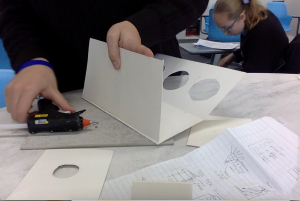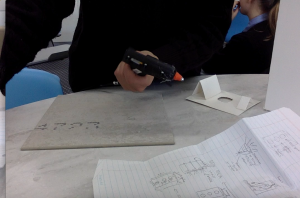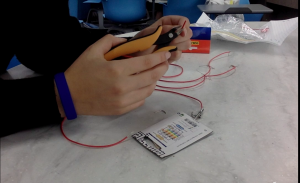Hello everyone, my aim for this lesson was to finish me stem project and begin my evaluation. I almost finished my whole model, but I just needed coloured cellophane to finish it off, I did not get to that today. Unfortunately, ALL of our lessons next are taken. So I’m going to pretend that I had a lesson and use as much time as I need to finish my evaluation and my project, I really enjoy STEM and want to put as much effort as possible into my work! Next week, even though I will not have a lesson, I will still keep you informed on what had been going on during that week. Again, Unfortunately, next week my STEM blog posts will come to an end, and so will my STEM lessons for semester 1 :(.
This lesson I was extremely busy and most of the lesson was extremely challenging. Glueing the top on last was not the best idea as I needed to get to the bottom of the box, but I managed in the end. Unfortunately, I do not have any photos for this week’s progress, but in my next post I will attach all the images I missed from this week as well as my final product.
Challenge 1:
Untangling the circuit. For some reason, every time I get my circuit out, It always manages to become tangled and 1 or 2 parts fall off. From this, I have learned how to securely attach the wire onto the circuit parts so they do not slip out of place.
Challenge 2:
Getting the glue gun and my hand to reach all the way to the bottom of the box to secure the wires at the back. My worries for this was that the glue would impact the flow of energy through the circuit, luckily, this didn’t happen and my circuit is working majority of the time.
Challenge 3:
Putting aluminium foil around the LED lights in a cone-like shape. I had a very difficult experience with this as the cones were slightly too small and I had to get the glue gun through the traffic light holes which was a difficult procedure. In the end I succeeded and was glad to.
To finish off the lesson, I glue the top on and in my opinion, it looks good! I can’t wait to present this project to the class and others in different year levels! I should probably get to writing my evaluation before it’s due on my timetable. Stay tuned for the last post of my blog with my evaluation attached to it!
Until next week’s post!

 Hi everyone, sorry for the late post for this week. This week I got stuck into craft and began to build the box for the traffic lights. My aim for this lesson was to finish the box. Next week is week 7 and my goal for week 7 is to finish constructing the traffic lights and beginning to write the evaluation. I will plan to finish the evaluation in the lessons in week 8 and begin to put together a booklet. To present my project, I am planni
Hi everyone, sorry for the late post for this week. This week I got stuck into craft and began to build the box for the traffic lights. My aim for this lesson was to finish the box. Next week is week 7 and my goal for week 7 is to finish constructing the traffic lights and beginning to write the evaluation. I will plan to finish the evaluation in the lessons in week 8 and begin to put together a booklet. To present my project, I am planni



 ore vocabulary and how it relates to code.
ore vocabulary and how it relates to code.